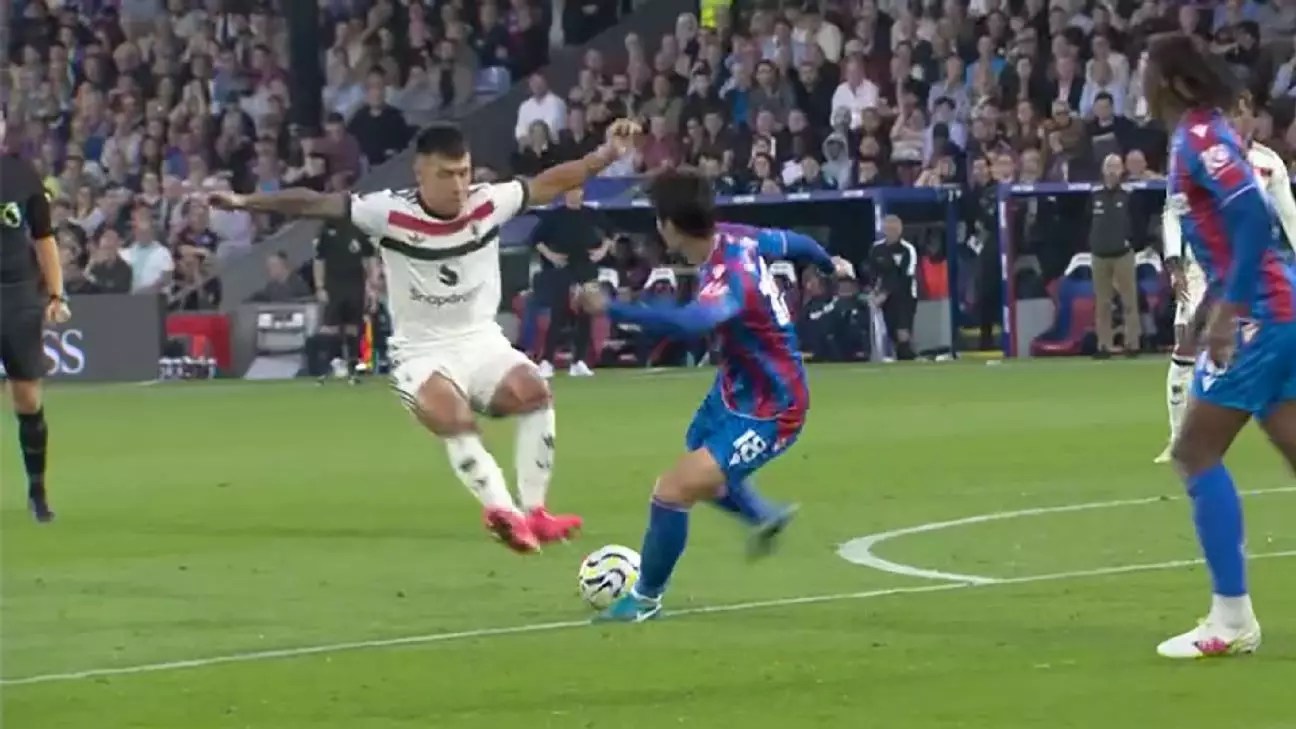The introduction of Video Assistant Referee (VAR) technology into the Premier League has transformed the landscape of football officiating, yet it has consistently incited debates among fans, players, and pundits alike. Each match week highlights instances where the application of VAR decisions produces conflicting opinions, raising questions about the integrity and efficacy of the system. This article delves into recent controversies involving VAR, examining key incidents, the decision-making process, and the ongoing discussions surrounding the implementation of this video technology.
Take, for instance, a heated moment between Manchester United’s Lisandro Martínez and Crystal Palace’s Daichi Kamada during their recent match. In a critical 63rd-minute engagement, a loose ball prompted Martínez to challenge Kamada with what many deemed a reckless, two-footed tackle. Referee David Coote did not issue a red card but opted for a yellow instead, a decision that sparked outrage. VAR Chris Kavanagh upheld the referee’s ruling, arguing that Martínez’s challenge did not make contact with Kamada. Critics argue that the absence of physical contact does not diminish the danger posed by such a tackle. The continuity in such decisions across the league leaves fans questioning the criteria that constitute a foul and how VAR assesses them.
Further complicating this issue is the aforementioned case involving Luton Town’s Jacob Brown and Manchester City. Brown was similarly spared from a sending-off for a dangerous two-footed tackle. The inconsistency in the application of VAR becomes glaringly apparent as observers point to how similar situations yield markedly different outcomes. The Premier League’s Independent Key Match Incidents Panel has noted a trend of missed opportunities to send off players for serious foul play, which only further deepens the frustration surrounding VAR’s capacity to ensure player safety.
Handball situations remain one of VAR’s trickiest challenges. During the same United versus Palace match, a free kick from United momentarily unsettled the Palace defense, resulting in a potential handball situation involving Maxence Lacroix and Jefferson Lerma. VAR determined that no penalty would be awarded, as both players’ positions and their hand movements were deemed justifiable, merely adhering to natural body motion. This ruling adheres to the current VAR interpretation, which demands that handball instances be overtly clear for intervention. Such a perspective raises questions about the standardized interpretations across the league, leaving teams to navigate a landscape fraught with uncertainty.
The issue of goalkeepers and contact is also pervasive. In another contentious incident, Arsenal scored a goal that some argued should have been disallowed due to a perceived foul on goalkeeper Ederson. However, VAR upheld the goal, classifying the interference as standard competitive behavior rather than a foul. This opens up further discussion about how contact around the goalkeeper is consistently interpreted, with varied expectations across leagues for what constitutes an obstruction.
Referring back to a notable incident towards the end of a recent match, Erling Haaland faced scrutiny for throwing a ball at Gabriel after scoring. While this act of frustration was certainly immature, VAR officials chose not to classify it as violent conduct, reflecting the leniency often applied to such player behavior. Critics argue that the threshold for violent conduct remains too lenient, suggesting that frequent displays of disrespect mandate firmer disciplinary measures.
Meanwhile, West Ham’s penalty appeal against Chelsea displayed yet another layer to the complexities of VAR decision-making. Crysencio Summerville fell to the ground following a brief hold from defender Wesley Fofana, leading to a VAR review that ultimately ruled against a penalty. This emphasizes the subjective nature of VAR, particularly in evaluating whether contact impeded a player’s natural movement.
As the Premier League continues its journey with VAR, it is imperative to reassess how these rules operate and how they are interpreted by officials. The evident inconsistencies within VAR’s rulings not only frustrate players and fans alike but also threaten the integrity of the game itself. With the current administration advocating for a “referee’s call,” there is a precarious balance between officiating authority and the technology designed to help them.
The tech must evolve alongside football itself. Greater clarity and uniformity in VAR protocols could bolster its acceptance and reduce the controversy surrounding its implementation. A reassessment of how critical incidents are analyzed remains crucial in ensuring that VAR becomes a tool for fairness rather than just a point of contention.
VAR’s promise to enhance the game faces scrutiny that must not be dismissed. It is essential to fine-tune its functions, prioritize player safety, and strive for an equitable approach in officiating. Only then can VAR truly serve as a catalyst for a transparent and fair footballing experience.


Leave a Reply